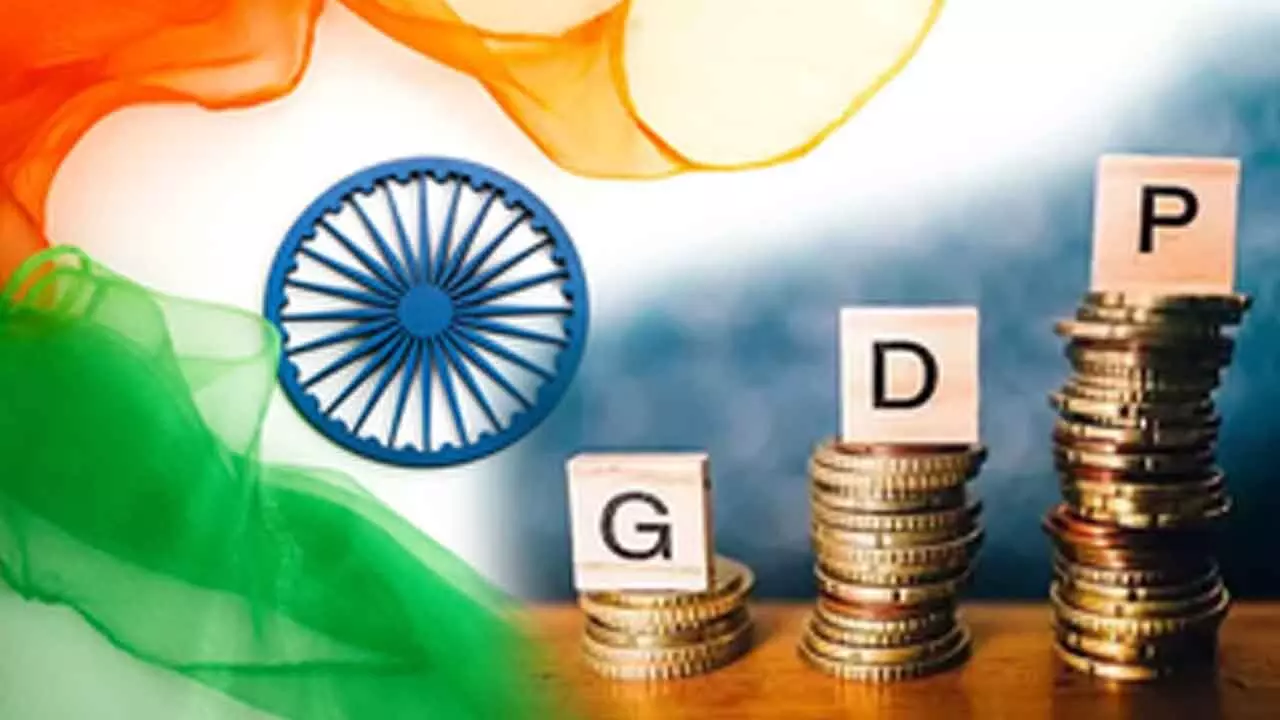Nothing to panic about though GDP growth is heading southwards
India’s GDP growth has quite expectedly slowed down in Q1 relative to the preceding quarter to a five-quarter low of 6.7 per cent from 7.8 per cent
image for illustrative purpose

India’s GDP growth has quite expectedly slowed down in Q1 relative to the preceding quarter to a five-quarter low of 6.7 per cent from 7.8 per cent. Surprisingly, it happened at a time when the GVA growth accelerated to 6.8 per cent from 6.3 per cent, which was driven by construction, public administration, defence and other services, and agriculture segments. This divergent trend was led by normalisation of the growth in net indirect taxes, and the slowdown in the GDP growth, which according to Icra is not a cause for alarm. Notwithstanding some green shoots, rural demand remained uneven in the quarter, amidst spillovers of the impact of the poor monsoon in the preceding year. Analysts anticipate a back-ended pickup in the GDP growth to above seven per cent in H2, boosted by factors such as the government capex and pent-up rural demand during the festive months. In q-o-q terms, real GDP always contracts in Q1. The seasonally adjusted GDP growth is invariably always higher than the non-seasonally adjusted GDP growth for Q1, indicating the first quarter growth is better than what the non-seasonally adjusted figure shows. It also has a higher seasonal component.
The expenditure side or the general demand shows largely positive picture with all heads except valuables showing positive growth in Q1. Private consumption grew by a robust 12.4 per cent in current prices. The investments also registered a healthy growth of 9.1 per cent in current prices. But the investment rate was flat at 31 per cent. The government, expenditure registered a growth of 4.1 per cent, which was slower one should remember that Q1 was also a period marked by the general elections. The ongoing monsoon season, after a lacklustre performance in June, has witnessed consistent heavy rains over the past two months. This July-August will one of the wettest two-month corresponding period the country has experienced in the last 30 years. A positive is that normal monsoon bodes well for kharif crop sowing and soil moisture retention in the coming months. This will subsequently impact food CPI on downward side. That apart, bank credit growth seems to be moderating after staying strong in recent years.
Going forward, Ecowrap expects the credit growth to be in the range of 12-13 per cent and deposits will grow 10-11 per cent in FY25. The divergence between investment and consumption growth has also reduced. The growth outcome will see cyclical headwinds in the form of fading terms-of-trade benefits, on lower commodity prices, tighter lending standards, weaker global growth and exports, and mildly slower GoI net spending growth, despite increasing populist measures across Centre and the states. From the expenditure side, slowdown in GDP growth was mainly due to sharp contraction in GoI spends owing to general elections. Slower growth would be due to slowdown in manufacturing, and a not-too-exciting urban consumption story. But agricultural growth, says Emkay, is expected to improve as monsoon progresses and sowing activity remains healthy.

